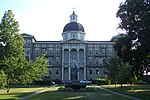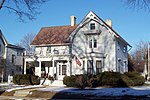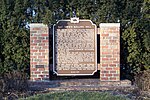Seminary Woods St. Francis

Seminary Woods is a historic woodland in St. Francis, Wisconsin, on the grounds of Saint Francis de Sales Seminary. It is one of the last surviving beech-maple mesic forests in Wisconsin. The forest was founded in 1855 when the seminary moved to St. Francis from Milwaukee and the land that was originally purchased by the Lake Drive Franciscan Sisters became part of the newly established seminary. The forest consists of 68 acres and is located near Lake Michigan. It attracts attention from naturalists for the forest's beech-maple composition and wild flowers that bloom in the spring. A striking feature of the forest is the seminary's cemetery that lies hidden among the trees.
Excerpt from the Wikipedia article Seminary Woods St. Francis (License: CC BY-SA 3.0, Authors, Images).Seminary Woods St. Francis
East Ohio Avenue, Milwaukee
Geographical coordinates (GPS) Address Nearby Places Show on map
Geographical coordinates (GPS)
| Latitude | Longitude |
|---|---|
| N 42.982 ° | E -87.8711 ° |
Address
Saint Francis Seminary & DeSales Seminary
East Ohio Avenue
53207 Milwaukee
Wisconsin, United States
Open on Google Maps





